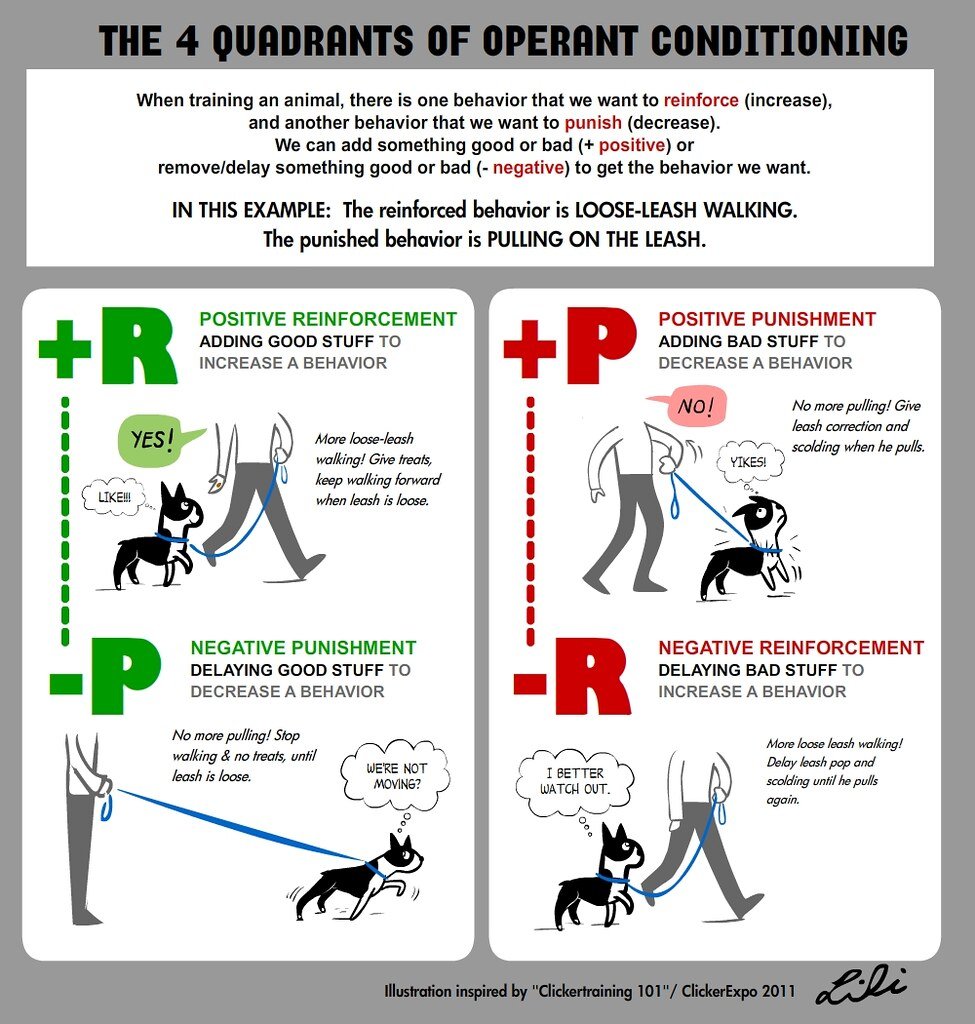Understanding Operant Conditioning
Written by Kiyoka Tamesue, PSM, KPA CTP
The ABCs of Learning:
Operant conditioning is a type of associative learning that uses consequences to either increase or decrease the strength and frequency of a voluntary behavior. This type of conditioning can be broken down into three simple steps:
Antecedents: What happens right before the behavior (i.e., the doorbell rings).
Behavior: Your puppy’s response to the antecedent (i.e., your puppy runs towards the door and starts barking).
Consequence: What happens to your puppy immediately following the behavior. This will either increase or decrease the likelihood that the behavior will be repeated in the future (For example: Scolding your puppy and yell “no barking”, or feeding them a treat).
Learning how to arrange and/or change Antecedents and/or Consequences to change your puppy’s Behaviors and help set them up for greater success!
The Four Quadrants of Operant Conditioning:
The four quadrants of operant conditioning are positive reinforcement (R+), negative reinforcement (R-), positive punishment (P+), and negative punishment (P-).
It is important to note that in this context, the words “positive” and “negative” do not mean “good” or “bad.” Instead, they are used to describe whether a stimulus or consequence is being added (+) or removed (-) from a situation. Reinforcement increases the strength and frequency of a behavior, while punishment decreases the strength and frequency of a behavior. The stimulus or consequence can be pleasant (i.e., treats and praise) or unpleasant (i.e. pressure/pain) depending on the type of operant conditioning being used.
You can liken negative reinforcement (R-) to twisting someone’s arm until they do what you want. An example of this is pushing down on a dog’s rump and not removing the pressure until they sit. In this situation, the unpleasant stimulus (pressure) is removed (-) when the dog sits, to increase the likelihood they will ‘sit’ in the future (R).
Negative punishment (P-) on the other hand involves removing (-) a pleasant stimulus to decrease an undesired behavior (P). For example, withholding treats or attention (pleasant stimulus) from a dog that is jumping on you will result in a decrease of the behavior in the future.
POSITIVE REINFORCEMENT
Positive reinforcement (R+) simply means adding (+) a pleasant stimulus such as praise, treats, or play, to increase the likelihood of a behavior being repeated in the future (R). R+ is a non-aversive training technique that gives your puppy more choice and control, and lets them know what is expected of them in a clear and kind way.
For example, giving Fido a tasty treat (+) when he sits, increases the likelihood that he will continue to sit in the future (R).
When To Use It
Like all forms of operant conditioning, positive reinforcement is only effective when the behavior or response being reinforced is voluntary (i.e., sit, stay, come, etc.). This principle does not work for involuntary reactions such as fear-based behaviors. (See Understanding Classical Conditioning)
NOTE: Using aversive, force-based punishments can be incredibly harmful to your pup and your relationship with them and is not recommended.
Rather than punishing your puppy when they do something “wrong,” it is much more effective and kind to use positive reinforcement to teach your pup what you would like them to do instead. This is called differential reinforcement of alternative behaviors.
A great way to teach your pup what is expected of them is to ignore the behaviors you don’t like, and reinforce the heck out of behaviors you do like!

